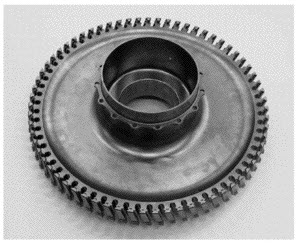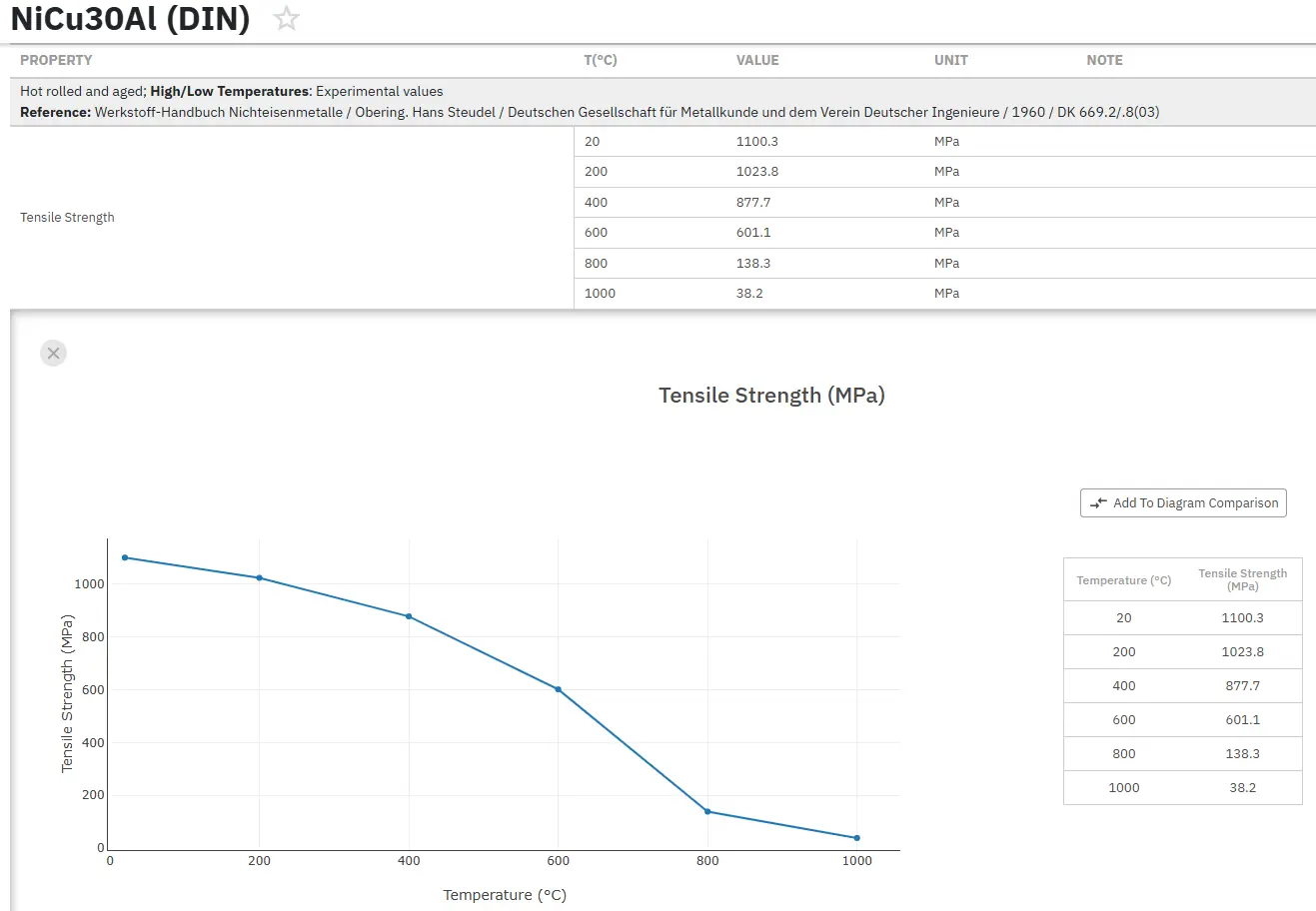High Temperature Nickel-Based Superalloys for Turbine Discs: Part One
Abstract
Nickel-based superalloys are specialized metallic materials known for their exceptional high-temperature strength, toughness, and resistance to corrosive and oxidizing environments. Widely used in aircraft engines and power generation turbines, these alloys operate under extreme conditions, with turbine disc rim temperatures reaching up to 815°C in some military applications. Advances in alloy composition and processing now enable these materials to withstand temperatures up to 1050°C, with localized hotspots tolerating as high as 1200°C. This article reviews the microstructural and compositional factors underlying these properties, highlights production methods for turbine discs, and discusses the balance between performance and commercial demands, including cost and durability.
Introduction to Nickel-Based Superalloys
Nickel-based superalloys are an exceptional class of metallic materials combining high-temperature strength, toughness, and resistance to corrosion and oxidation. They find critical applications in aircraft turbines, power generation, rocket engines, nuclear power, and chemical processing due to their ability to maintain integrity under extreme conditions.
Significant development in alloy chemistry and manufacturing over recent decades has resulted in superalloys capable of tolerating average temperatures of 1050°C and localized hotspots approaching 1200°C—about 90% of their melting point. This article reviews key microstructural aspects, production processes, and mechanical properties of superalloys, focusing primarily on gas turbine engine discs
High-Temperature Challenges in Turbine Discs
Gas turbines, whether in aircraft propulsion or land-based power generation, involve highly demanding environments. The high-pressure turbine discs, especially their rim sections near the gas flow path, face some of the highest temperatures and stresses, reaching up to 760°C routinely and 815°C in specialized military uses. These conditions demand highly specialized nickel-based superalloys to ensure performance and reliability.
Turbine discs serve as the attachment point for turbine blades and are connected to the turbine shaft. Unlike turbine blades, discs typically operate at lower temperatures but must withstand high mechanical stresses, particularly fatigue. Discs are generally cast and then forged, and are polycrystalline in structure.
Production and Microstructure of Turbine Discs
One challenge in manufacturing turbine discs is that cast alloys often develop large columnar grain structures and significant chemical segregation, which can cause variability in mechanical properties. This segregation is not fully eliminated in the finished product, leading to potential inconsistencies.
A common approach to mitigate this is to start with fine, clean powder produced by atomization in inert gas. The chemical segregation within this powder cannot exceed the particle size. Some turbine discs are manufactured by hot isostatic pressing (HIP), extrusion, and subsequent forging of this powder, yielding improved microstructural uniformity and mechanical consistency.

Figure 1: Powder metallurgical aeroengine disc
The process demands strict contamination control, as the introduction of foreign particles (from atomization refractories or solidification impurities) can initiate fatigue cracks, risking catastrophic failure of the disc.
Table 1. Chemical Compositions of Several Nickel-Based Superalloys (wt.%)
| Alloy | Cr | Ni | Co | Mo | W | Nb | Ti | AI | Fe | C | B | Other |
| A286 | 15 | 26 | - | 1.25 | - | - | 2 | 0.2 | 55.2 | 0.04 | 0.005 | 0.3 V |
| AF115 | 10.7 | 56 | 15 | 2.8 | 5.9 | 1.7 | 3.9 | 3.8 | - | 0.05 | 0.02 | 0.75 Hf; 0.05 Zr |
| AF2-1DA | 12 | 59 | 10 | 3 | 6 | - | 3 | 4.6 | <0.5 | 0.35 | 0.015 | 1.5 Ta, 0.1 Zr |
| AF2-1DA6 | 12 | 59.5 | 10 | 2.75 | 6.5 | - | 2.8 | 4.6 | <0.5 | 0.04 | 0.015 | 1.5 Ta, 0.1 Zr |
| Alloy 706 | 16 | 41.5 | - | - | - | - | 1.75 | 0.2 | 37.5 | 0.03 | - | 2.9 (Nb+Ta),0.15 Cu |
| Alloy 718 | 19 | 52.5 | - | 3 | - | 5.1 | 0.9 | 0.5 | 18.5 | 0.08 | - | 0.15 Cu |
| APK12 | 18 | 55 | 15 | 3 | 1.25 | - | 5 | 2.5 | - | 0.03 | 0.035 | 0.035 Zr |
| Astroloy | 15 | 56.5 | 15 | 5.25 | - | — | 3.5 | 4.4 | <0.3 | 0.06 | 0.03 | 0.06 Zr |
| Discaloy | 14 | 26 | — | 3 | - | - | 1.7 | 0.25 | 55 | 0.06 | - | |
| IN100 | 10 | 60 | 15 | 3 | - | - | 4.7 | 5.5 | <0.6 | 0.15 | 0.015 | 0.06 Zr, 1.0 V |
| KM-4 | 12 | 56 | 18 | 4 | - | 2 | 4 | 4 | - | 0.03 | 0.03 | 0.03 Zr |
| MERL-76 | 12.4 | 54.4 | 18.6 | 3.3 | - | 1.4 | 4.3 | 5.1 | - | 0.02 | 0.03 | 0.35 Hi; 0.06 Zr |
| N18 | 11.5 | 57 | 15.7 | 6.5 | - | - | 4.35 | 4.35 | - | 0.015 | 0.015 | 0.45 Hf; 0.03 Zr |
| PA101 | 12.5 | 59 | 9 | 2 | 4 | - | 4 | 3.5 | - | 0.15 | 0.015 | 4.0 Ta; 1.0 Hf; 0.1 Zr |
| Rene 41 | 19 | 55 | 11 | 10 | - | - | 3.1 | 1.5 | <0.3 | 0.09 | 0.01 | |
| Rene 88 | 16 | 56.4 | 13.0 | 4 | 4 | 0.7 | 3.7 | 2.1 | - | 0.03 | 0.015 | 0.03 Zr |
| Rene 95 | 14 | 61 | $ | 3.5 | 3.5 | 3.5 | 2.5 | 3.5 | <0.3 | 0.16 | 0.01 | 0.05 Zr |
| Udimet 500 | 19 | 52 | 19 | 4 | - | - | 3 | 3 | <4.0 | 0.08 | 0.005 | |
| Udimet 520 | 19 | 57 | 12 | 6 | 1 | - | 3 | 2 | - | 0.08 | 0.005 | |
| Udimet 700 | 15 | 55 | 17 | 5 | - | - | 3.5 | 4 | <1.0 | 0.07 | 0.02 | 0.02 Zr |
| Udimet 710 | 18 | 55 | 14.8 | 3 | 1.5 | - | 5 | 2.5 | - | 0.07 | 0.01 | |
| Udimet 720 | 18 | 55 | 14.8 | 3 | 1.25 | - | 5 | 2.5 | - | 0.035 | 0.033 | 0.03 Zr |
| Udimet 720L1 | 16 | 57 | 15.0 | 3 | 1.25 | - | 5 | 2.5 | - | 0.025 | 0.018 | 0.03 Zr |
| V57 | 14.8 | 27 | - | 1.25 | - | - | 3 | 0.25 | 48.6 | 0.08 | 0.01 | 0.5 V |
| Waspaloy | 19.5 | 57 | 13.5 | 4.3 | - | - | 3 | 1.4 | <2.0 | 0.07 | 0.006 | 0.09 Zr |
Commercial Pressures and Alloy Development
Besides technical challenges, modern turbine materials must meet growing commercial demands, including reducing component acquisition, life-cycle, and maintenance costs. Efforts focus on alloys with reduced cobalt content and higher processing yields to lower acquisition expenses.
For life-cycle cost reduction, new alloys are designed for longer service lives with improved stability and very low crack-growth rates. Additionally, alloys that enable nondestructive inspection methods are increasingly favored.
Fuel efficiency and emissions regulations also influence superalloy development, pushing materials to balance performance with economic and environmental considerations. The alloys listed in Table 1 represent this ongoing optimization.
Access Precise Properties of Nickel and Superalloys Now!
Total Materia Horizon contains property information for 20,000+ nickel alloys: composition, mechanical and physical properties on various temperatures, corrosion resistance, nonlinear properties and much more.

Get a FREE test account at Total Materia Horizon and join a community of over 500,000 users from more than 120 countries.